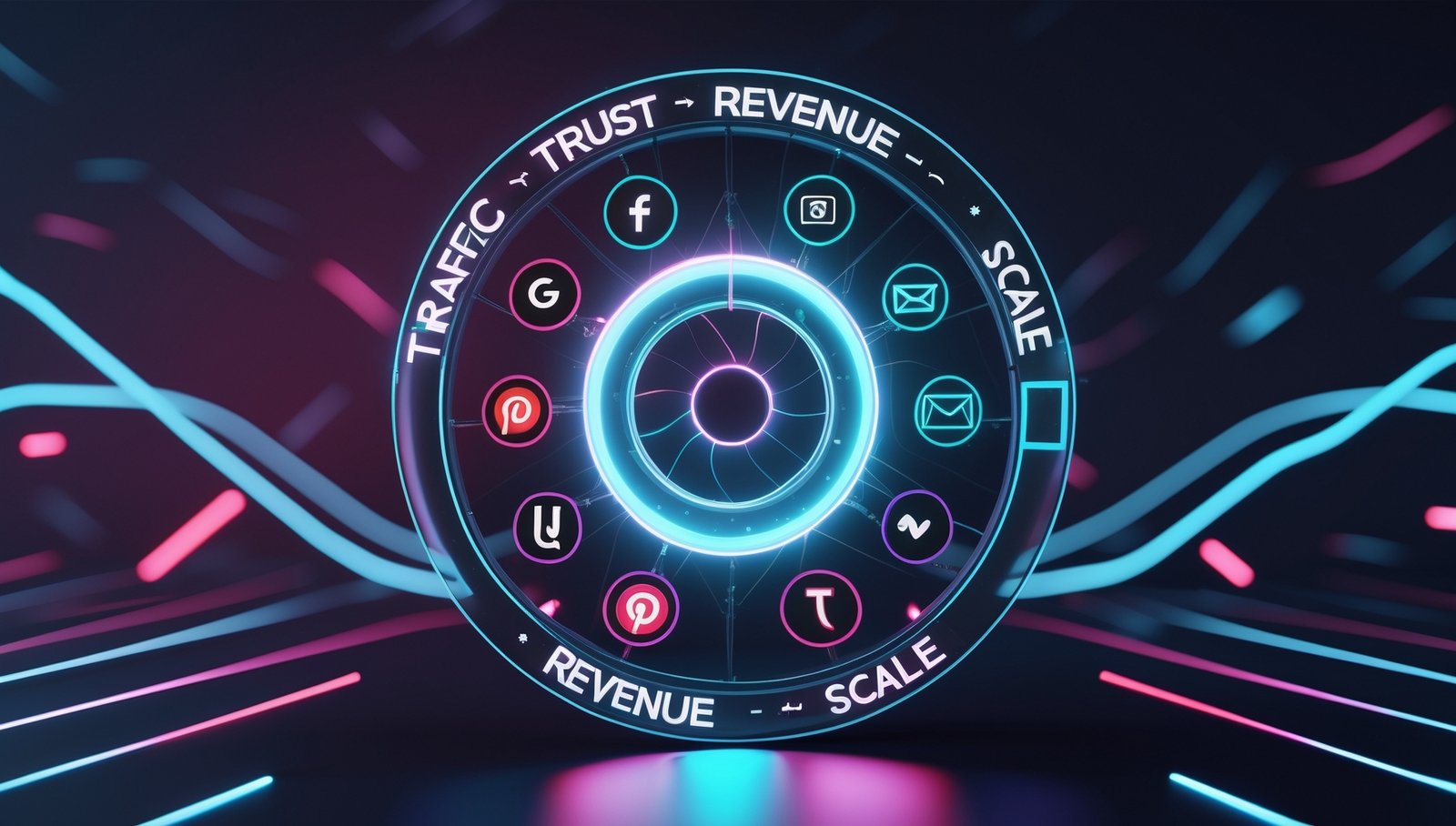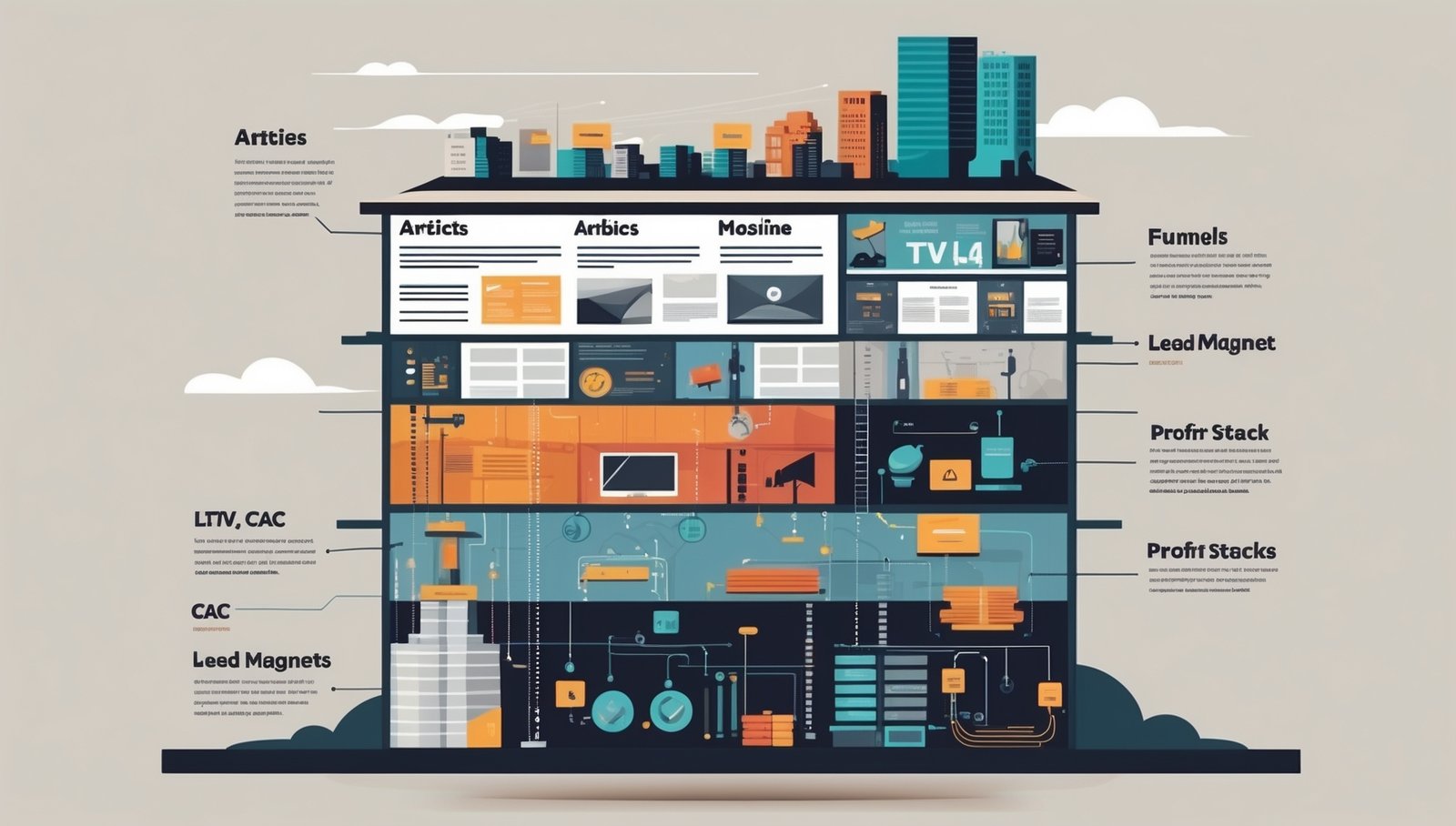It’s not burnout and it’s not incompetence. It’s something stranger, almost structural. A sense that you’ve been tending a machine built to move but never designed to win.
Profitable blogs don’t emerge from enthusiasm or volume. They come from the kind of architecture that looks invisible to an outsider but unmistakable to anyone who has ever built something that lasts.
This blueprint isn’t another list of “tips.” It’s the vantage point from inside the boardrooms of the top 1%—the system, the psychology, the economics, the quiet decisions that turn attention into revenue.
Let’s open the door.

The Hidden Economics Behind Blogging Profit Blueprint
(Blogging ROI → Lifetime Value → Acquisition Costs → Patterns of Monetization)
Why Most Blogs Fail Financially
Most blogs don’t collapse dramatically. They fade the way neglected buildings do—not through one catastrophic event, but through small, predictable failures that nobody bothered to fix.
The creators behind them aren’t misguided. They simply built their houses upside down.
They chased pageviews, not revenue. They created posts, not pathways. They followed the calendar, not the customer.
And so the pattern repeats itself: traffic grows but profits don’t. Engagement rises but conversions stall.
What looks like “underperformance” is really a misalignment between what readers seek and what the blog is structured to offer them.
It’s a quiet, expensive misunderstanding that most never notice until it’s too late.
Revenue Architecture vs. the “Post More Content” Myth
There’s a myth baked deep into digital culture—one that insists the answer to stagnation is always more: more posts, more keywords, more hustle.
But this belief, repeated often enough, has become a trap.
Revenue isn’t born from volume. It’s born from architecture—an ecosystem of intent, affinity, messaging, UX, offer sequencing, and pathways built to escort a reader from curiosity to clarity.
High performers don’t think in blog posts. They think in systems.
Every article becomes an entry point into a larger structure—a network of ideas, solutions, and decisions arranged not for the algorithm’s convenience but for the reader’s momentum.
This is the fundamental shift that separates those who grow from those who merely publish.
Blogging Profit Blueprint: The 80/20 Profit Leverage Equation
If you look closely at the operations of top earners, a pattern emerges that feels almost unfair in its simplicity.
A small fraction of their work—often 20%, sometimes less—drives nearly all of their profits.
But the insight most people miss is the second layer: it’s not just the content that’s unequal. It’s the system.
A handful of well-placed levers—optimized funnels, well-crafted lead magnets, key conversion pathways—control the entire financial output.
These aren’t optional enhancements. They’re the silent architecture behind every thriving digital business.
Without them, even the most brilliant content collapses under its own inefficiency.

The Step-by-Step Blogging Profit Blueprint
(Strategy → Intent → Semantic Clusters → UX → Multi-Channel Distribution)
Step 1 — Precision Niche Carving Using Intent + Affinity Data
Choosing a niche has never been about picking a topic you “like.” That’s the beginner’s version of freedom.
The professionals—those who treat blogging like a business—lean into something more analytical, more subtle, more humane.
They map intent, yes. But also affinity—the emotional DNA of an audience.
What they believe. What they fear losing. What promises make them lean forward. What identity they’re trying to protect or grow into.
Profit doesn’t live in trending topics. It lives in the psychological intersections where people are searching not just for answers, but for affirmation, direction, or relief.
This is where a niche stops being a category and becomes a compass. For a deeper breakdown of this process, see our guide on precision niche research using intent and affinity data.
Step 2 — Topic Cluster Engineering With BERT-Aligned Semantic Weight
At first glance, topic clusters look like tidy organizational tools—structured collections of articles arranged around a theme.
But beneath that simplicity lies something far more strategic.
A true cluster mirrors the way Google understands the world: through meaning, relationships, and context.
The pillars act as anchors. The supporting posts fill in the semantic space. The long-tail articles create the connective tissue that reflects genuine expertise.
BERT isn’t looking for keyword repetition. It’s looking for depth—evidence that you understand the intricacies of a subject the way a specialist would.
When your cluster reads like a miniature knowledge graph, something shifts. Your site stops competing and starts leading. You can learn more in our walkthrough on topic cluster SEO strategy.
Step 3 — Profit Path Design: Offers, Affiliate Mapping & Conversion UX
Traffic without direction is just noise wearing the costume of success.
Top earners map their revenue before they ever write a headline.
Every piece of content is linked, explicitly or subtly, to a monetization pathway:
- Primary offers
- Secondary offers
- High-intent posts
- Lead magnet doors
- Trust-building content
- Clarity-focused sales pages
This is where the blog becomes more than information. It becomes a finely tuned experience—one that feels coherent, thoughtful, and strangely effortless to the person reading it.
They don’t feel sold to. They feel guided. For practical examples, explore our breakdown of blog profit paths and funnel design.
Step 4 Blogging Profit Blueprint — Behavioral Content Architecture for Maximum Dwell Time
If you’ve ever read a piece that held you longer than you intended, you know there’s something mysterious about well-timed storytelling.
It’s not flashy. It’s not manipulative. It’s human.
Behavioral architecture is the art of writing with the quiet rhythms of natural thought:
- The unexpected pause
- The subtle tension
- The shift in tone
- The intuition that something more is coming
- The relief when it arrives
Google doesn’t “feel” this, but it measures it—through dwell time, engagement, scrolling patterns, return visits.
Readers stay when the words don’t lecture but accompany. To deepen this skillset, see our article on storytelling psychology for bloggers.
Step 5 — Multi-Channel Traffic Flywheel
Scaling a blog is not a linear climb; it’s an orbit.
Blogs that grow, really grow, do so by expanding into a constellation of platforms:
- Pinterest for discovery
- YouTube for authority
- TikTok for virality
- Reddit for credibility
- Email for continuity
- Search for compounding stability
Each channel amplifies the others. Each creates new entry points into the ecosystem.
A blog becomes less of a destination and more of an interconnected experience—one that users encounter across the digital map until they feel, unmistakably, like they “know” you.
This is where loyalty is born. This is where revenue stabilizes. For implementation ideas, read our playbook on the multi-channel blog traffic flywheel.

Insider Margin Multipliers
(Intent → CRO → Funnels → Offer Depth)
Monetization Angle Mapping (High vs. Mid vs. Low Intent Keywords)
Pull up a keyword list and you’ll see a universe of phrases that look identical at first glance.
They’re not.
Some keywords are loaded with urgency. Others carry curiosity. Some arrive dripping with transactional intent.
High-intent queries can feel electric—“best,” “reviews,” “alternatives,” “vs”—because the reader is already poised on the edge of a decision.
Mid-intent readers want direction. Low-intent readers want reassurance or inspiration.
Top earners don’t chase everything at once. They map where profit lives and build outward from there.
It’s the difference between growth and precision. Between noise and revenue. You can see practical keyword mapping models in our guide on keyword intent mapping for bloggers.
B2C vs B2B Monetization: How to Choose the Highest LTV Path
There’s a secret sitting quietly in the economics of digital content:
B2B buys bigger. B2B buys faster. B2B buys repeatedly.
While B2C audiences offer emotional richness and scale, B2B partnerships deliver a kind of financial gravity that can double or triple the LTV of a single reader.
The most profitable creators don’t choose one or the other. They weave both—using consumer content to create reach and business-facing offers to create margin.
This hybrid approach isn’t about cleverness. It’s about seeing the full map of opportunity.
Content → Lead Magnet → Offer → Upsell: The Profit Stack
Think of your blog as a conversation that deepens as trust grows.
The reader arrives because they’re curious. They stay because they feel understood. They choose an action because the next step feels natural, not forced.
Top earners build profit stacks, not sales traps:
- Content first
- Lead magnet next
- Entry-level offer
- Core transformation
- Upsell
- Continuity
The experience feels linear to the reader. But behind the scenes, the architecture is anything but simple. For concrete funnel layouts, visit our resource on blog profit stack examples.
High-Level Execution Frameworks Used by Top Earners
(Operations → Production → AI + Human Craft → Data Cadence)
Operational Sprints & Content Pipelines
If you follow a top 1% operator long enough, you’ll notice a cadence to their work that feels almost athletic.
They move in focused bursts. They batch tasks. They sprint through clusters. They refine funnels. They audit systems. They measure what matters and ignore what doesn’t.
The chaos you see in most blogs—the improvisational publishing, the scattered themes—is replaced by a calm, almost corporate precision.
It’s not rigidity. It’s intention. To borrow their methods, explore our framework on operational sprints for content creators.
AI-Hybrid Production Without Losing Human Emotional Resonance
The modern creator lives at a crossroads where speed and soul often feel like rivals.
But the top performers have learned to let them coexist.
AI provides scaffolding—structures, variations, frameworks. The human fills it with meaning, nuance, breath, rhythm.
The union is pragmatic, not philosophical.
Readers don’t stay because something was generated quickly. They stay because something inside the piece feels unmistakably alive. For workflow inspiration, see our AI-hybrid blog content workflow.
Data Cadence: Quarterly Algorithm Shifts & How to Pivot
Every quarter, the digital landscape shifts in small but consequential ways—SERPs reshuffle, AI overviews reinterpret content, EEAT tightens, UX signals become louder.
Top earners don’t react to the chaos of the moment. They respect the cadence.
They run audits. They adjust clusters. They pivot messaging. They evolve funnels. They re-evaluate what their readers actually want now, not last year.
The system breathes because it’s built with the understanding that change is not a threat but a certainty. You can use our quarterly SEO audit checklist to mirror this cadence.
Frequently Asked Questions
How do I know if my blog has a real profit blueprint or just random content?
Look at your content like an investor, not a writer. Can you clearly trace how a cold visitor moves from a single post into a lead magnet, an offer, and an upsell—or do they simply read and leave? A real profit blueprint has visible pathways, defined entry points, and deliberate next steps. Random content has none of that. It just exists.
Where should I start if my current blog is already a mess?
Don’t burn it down. Start with a diagnostic. Identify your highest-traffic and highest-earning pages, then rebuild around them. Create topic clusters, fix internal links, and map offers onto intent. You’re not starting from zero—you’re restructuring an existing asset into a more efficient, more profitable system.
Do I need to choose between SEO and storytelling to keep readers engaged?
No. The blogs that win long term are the ones that combine both. Semantic SEO helps you get discovered; storytelling psychology helps you stay remembered. You’re optimising for algorithms and humans at the same time—depth, clarity, emotional resonance, and structured relevance all matter.
How long does it realistically take to see results from a profit-focused strategy?
Once the architecture is in place, you can see early indicators—better engagement, improved rankings, higher EPC—within a few months. Significant, compounding results often arrive in 6–12 months, depending on your starting point, frequency, and how aggressively you execute the blueprint.
Can a solo creator really run this kind of “top 1%” system?
Yes, if you think in systems and sprints instead of tasks and to-do lists. You don’t need a big team; you need focused cycles, the right tools, and a willingness to iterate. Many high-performing blogs are still run by lean teams or solo operators who’ve learned to treat their work like a compact, efficient media company.
Products / Tools / Resources
Here are some categories of tools and resources that align naturally with the systems and strategies explored above:
- Keyword research suites for intent depth and affinity analysis – ideal for building your niche and cluster strategy. (Example: see our curated list of best keyword research tools for bloggers.)
- Content clustering and internal linking tools to help you visualise and strengthen your semantic topic map. (Explore: content cluster & internal linking tools.)
- Affiliate tracking platforms that reveal EPC, LTV, and performance across partners so you can prioritise the highest-margin relationships.
- Behavior-focused analytics tools measuring dwell time, scroll depth, and user journeys to refine your behavioral content architecture.
- Email marketing platforms with automation and segmentation for building your lead magnet → offer → upsell profit stack. (See our breakdown of email marketing tools for blog monetization.)
- Project management systems designed for sprint-style content pipelines, so you can operate like a lean media company instead of a scattered creator.
- AI-assisted writing and outlining tools used as scaffolding—not as a replacement for your voice—to increase speed while protecting emotional resonance.
- SEO & audit dashboards built for quarterly reviews, algorithm shift monitoring, and strategic pivots based on real data instead of guesses.
These aren’t shortcuts. They’re the quiet backbone behind any blog built to last.






0 Comments